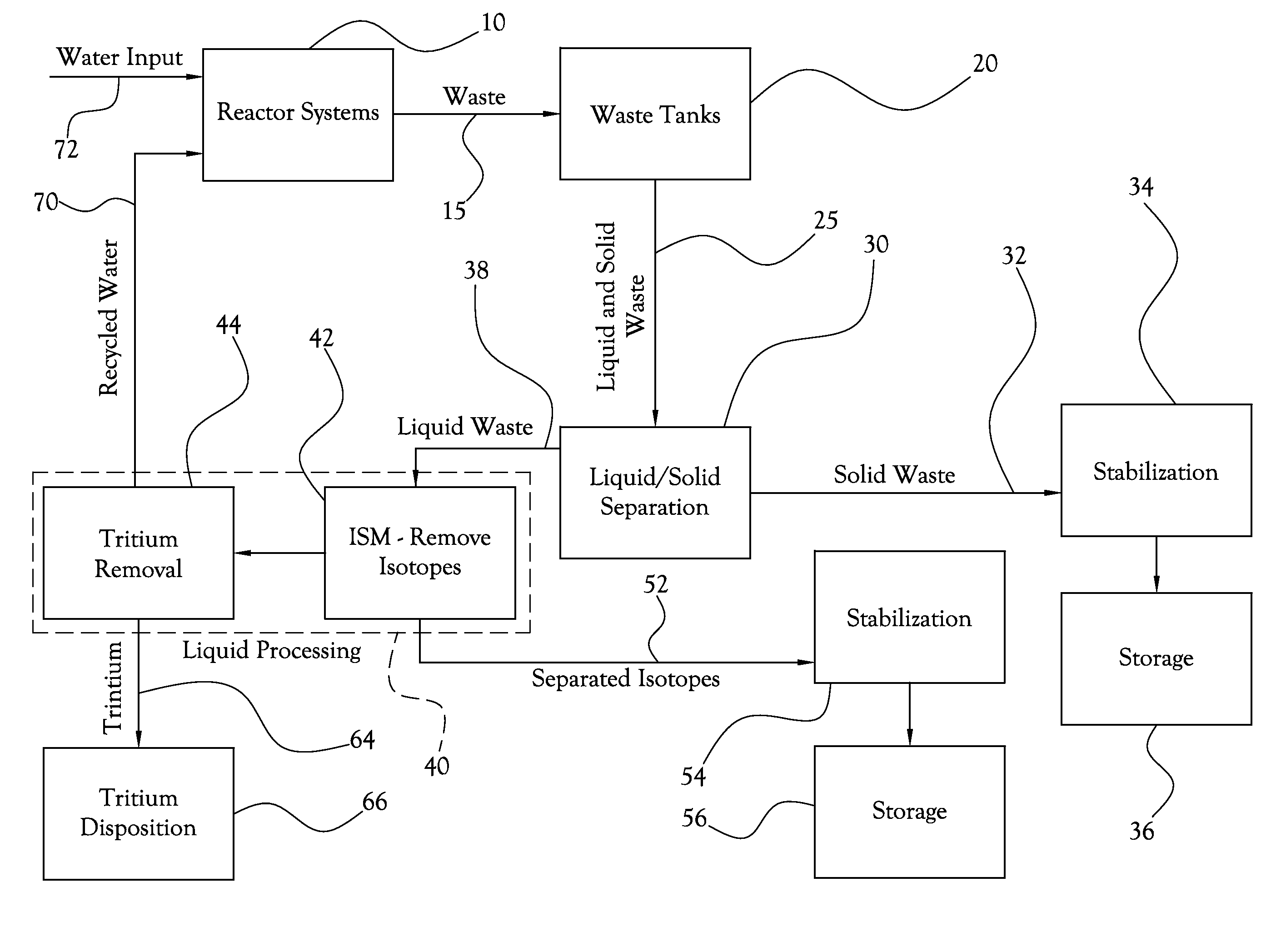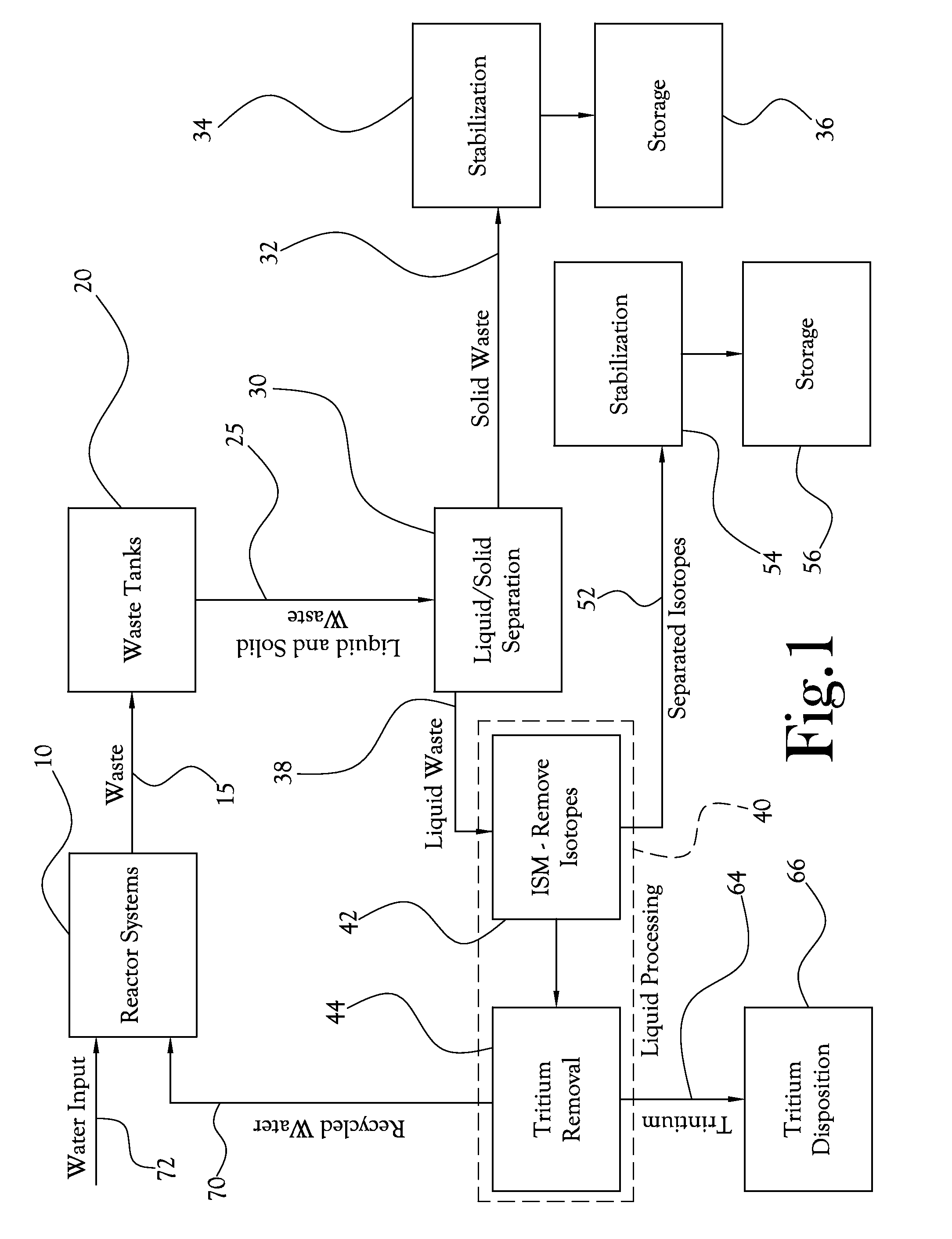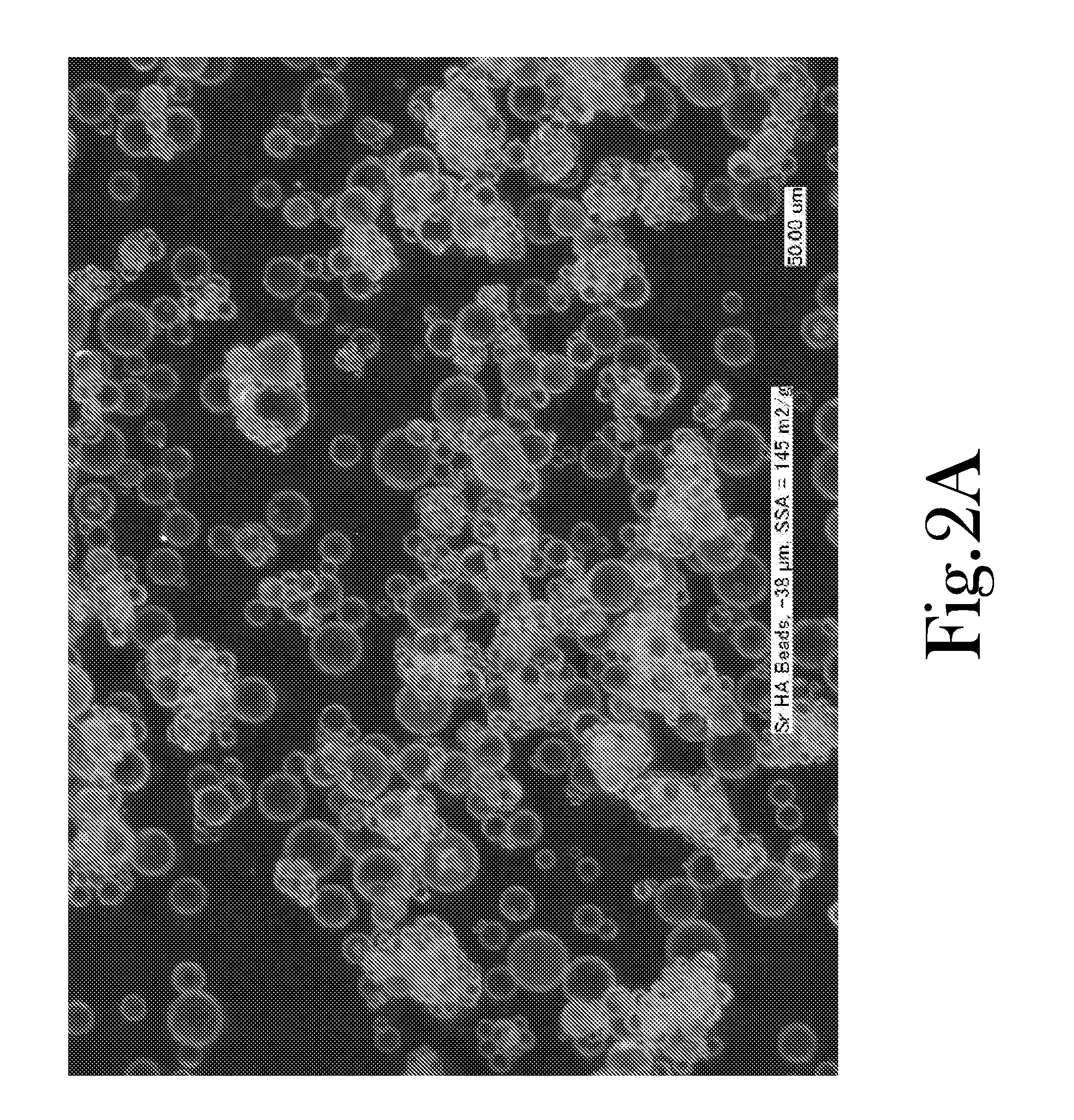Isotope-Specific Separation and Vitrification Using Ion-Specific Media
a radioactive isotope and vitrification technology, applied in nuclear engineering, nuclear elements, greenhouse gas reduction, etc., can solve the problems of increased storage and disposal requirements, unavoidable leakage, and increased cost of management, and achieve the effect of enhancing the volume of lower-classification was
- Summary
- Abstract
- Description
- Claims
- Application Information
AI Technical Summary
Benefits of technology
Problems solved by technology
Method used
Image
Examples
Embodiment Construction
[0023]The present invention, in some of its embodiments, includes processes and methods for the separation, isolation, or removal (collectively “separation”) of specific radioactive isotopes from radioactive waste, these processes and methods employing isotope-specific media (ISM). In some embodiments, the processes and methods further include the vitrification of the separated isotopes, generally with the ISM; this isotope-specific vitrification (ISV) is often a step in a larger scheme of preparing the radioactive isotopes for long-term storage or other disposition. In many cases, a combined process that includes both isotope separation using ISM and isotope-specific vitrification—i.e., a combined ISM / ISV process) is part of a larger system for treating radioactive waste.
[0024]In several embodiments, the ISM comprise porous microspheres that present a large reactive surface area per weight of media. For example, for ISM, some embodiments of the present invention use glass-based mic...
PUM
 Login to View More
Login to View More Abstract
Description
Claims
Application Information
 Login to View More
Login to View More - R&D
- Intellectual Property
- Life Sciences
- Materials
- Tech Scout
- Unparalleled Data Quality
- Higher Quality Content
- 60% Fewer Hallucinations
Browse by: Latest US Patents, China's latest patents, Technical Efficacy Thesaurus, Application Domain, Technology Topic, Popular Technical Reports.
© 2025 PatSnap. All rights reserved.Legal|Privacy policy|Modern Slavery Act Transparency Statement|Sitemap|About US| Contact US: help@patsnap.com



